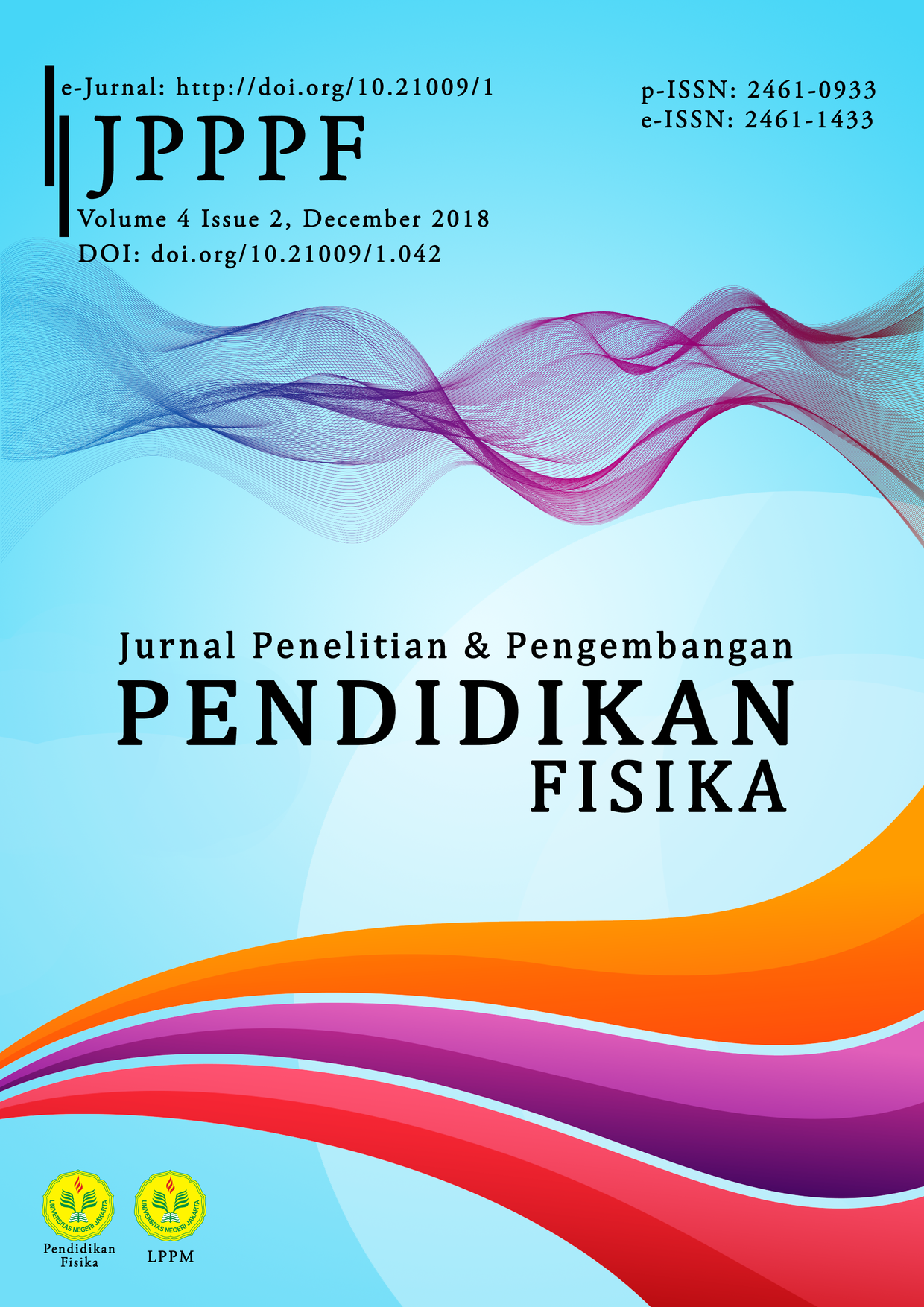The Profile of Scientific Literacy Skill Student at SMA Batik 2 Surakarta
DOI:
https://doi.org/10.21009/1.04201Keywords:
scientific literacy skill, qualitative descriptiveAbstract
Some research showed that many teachers have literacy skills but they have not used them in the classroom yet.This research aims to describe science literacy competence of SMA Batik 2 Surakarta students and teacher. The research uses qualitative descriptive method. The study was conducted at SMA Batik 2 Surakarta with tenth grade science class students as the subjects. There were 88 students as and 2 teacher the subjects. The samples selected by using total sampling technique. The research instrument used in this study is science literacy test adapted from PISA (Programme for International Student Assesment). The data analysis technique used is percentage. The result of this study shows that 57,41% student mastered the science literacy competence, the student completed in science literacy competence included in the middle level this research. The interviews with teachers and students show that the use of science literacy in the classroom is still low.This research is complementary the study of the importance of teacher ability analysis in the use of scientific literacy skill in the classroom
References
Departemen Pendidikan Nasional 2006, Permendiknas No 22 Tahun 2006, Jakarta.
Departemen Pendidikan Nasional 2007, Kajian Kurikulum Mata Pelajaran IPA, Jakarta.
Hurd, P 1985, ‘Science Education For A New Age: The Reform Movement’, NASSP Bulletin, vol. 9, pp. 83-92
Kementerian dan Kebudayaan 2006, Peringkat dan Capaian Indonesia Mengalami Peningkatan, vol. 4, pp.15.
Mullis, IVS, Martin, MO, & Foy, P 2016, TIMSS Advanced 2015 International Results in Advanced Mathematics and Physics, Chestnut Hill, MA, TIMSS & PIRLS International Study Center, Boston College.
National Research Council (NRC) 1996, National Science Education Standards, National Academy Press, Washington.
Organisation for Economic Cooperation and Development (OECD) 1998, Instrument design: A framework for assessing scientific literacy. Report of Project Managers Meeting, OECD Publishing, Netherlands.
Organisation for Economic Cooperation and Development (OECD) 2007, Assessing scientific, reading and mathematical literacy: A framework for PISA 2006, OECD Publishing, Paris.
Organisation for Economic Cooperation and Development (OECD) 2009, Take the Test Sample Questions from OECD’s PISA Assessments, OECD Publishing, Paris.
Organisation for Economic Cooperation and Development (OECD) 2013, PISA 2012 Assessement and Analytical Framework: Mathematics, Reading, Science, Problem Solving and Financial Literacy, OECD Publishing, Paris.
Organisation for Economic Cooperation and Development (OECD) 2015, PISA Result From PISA 2015, OECD Publishing, Paris.
Rusilowati A, Kurniawati L, Nugroho SE, & Widiyatmoko A 2016, ‘Developing an Instrument of Scientific Literacy Asessment on the Cycle Theme’, International Journal of Environtmental & Science Education, vol. 11, pp. 5718-5727.
Sultan AA, Henson H, & Fadde PJ 2018, ‘Pre-Service Elementary Teachers’ Scientific Literacy and Self-Efficacy in
Teaching Science’, IAFOR Journal of Education, vol. 6, pp. 25-42.
Trefil J 2008, ‘Science education for everyone: why and what?’, Liberal Education, vol. 94, pp. 6-11.











